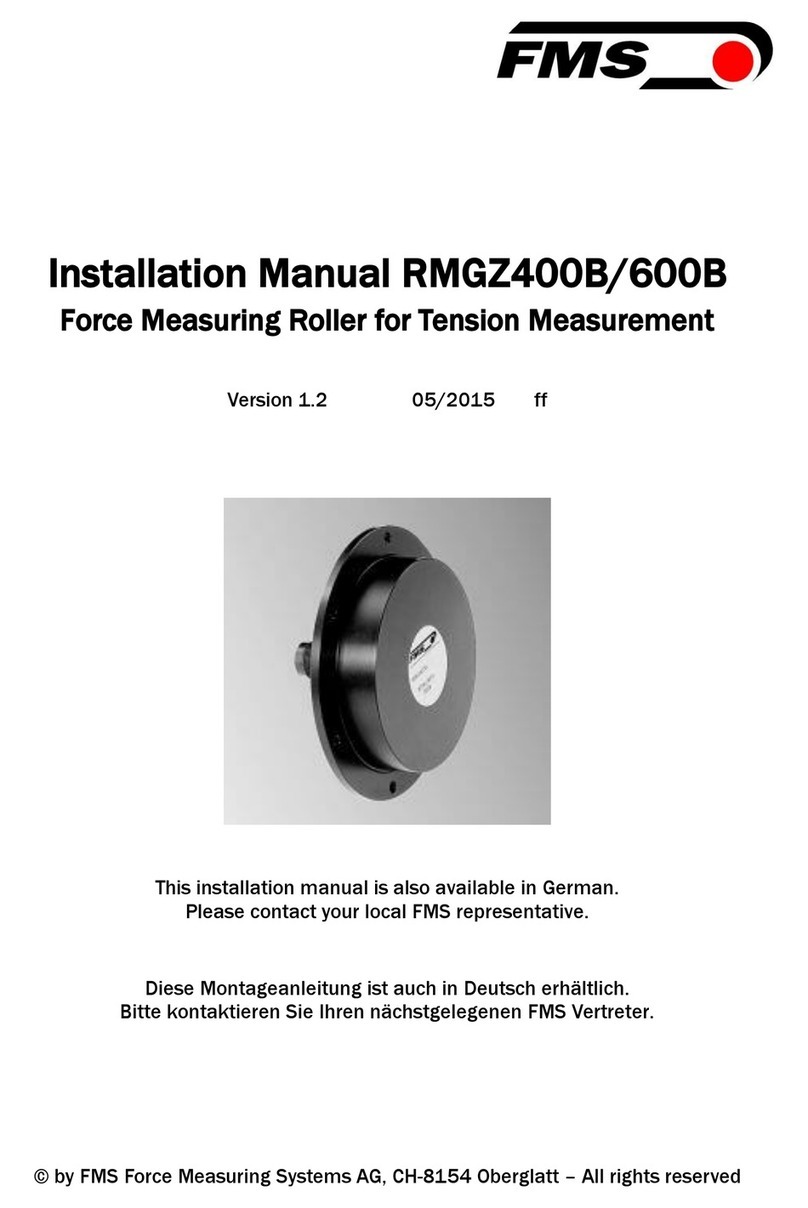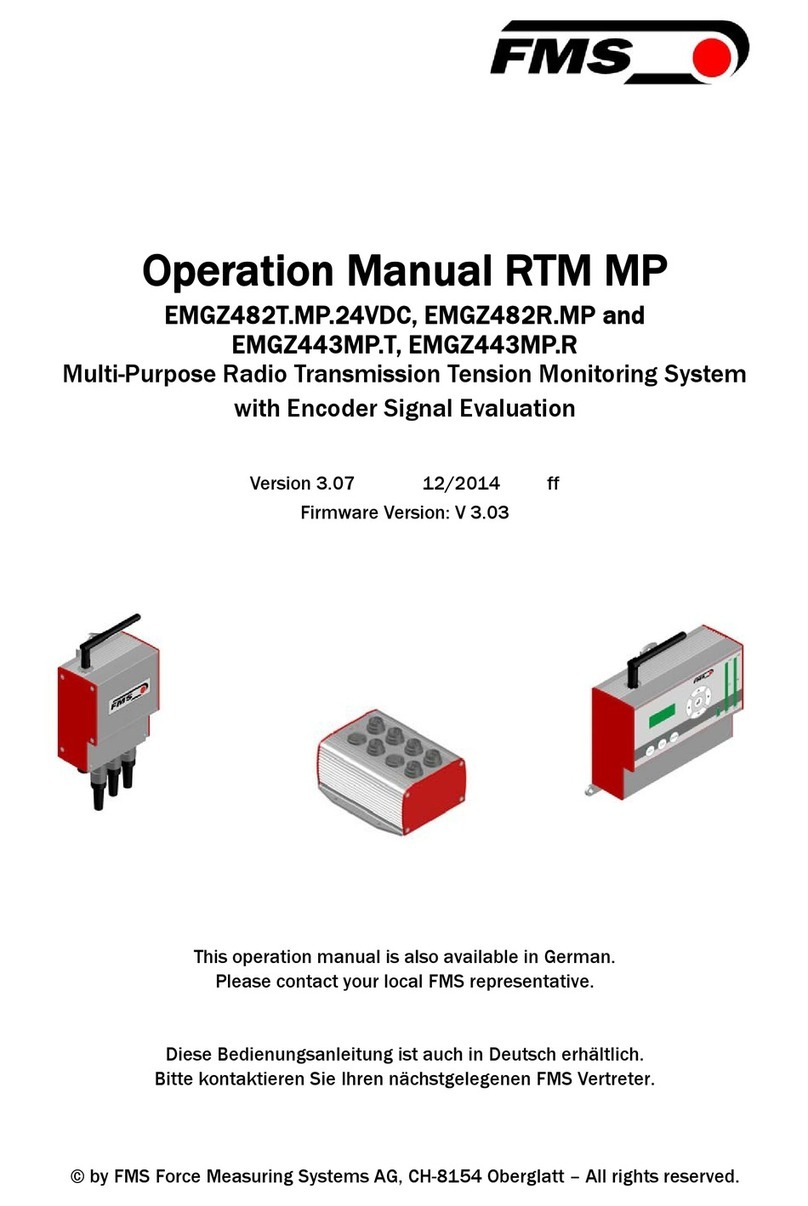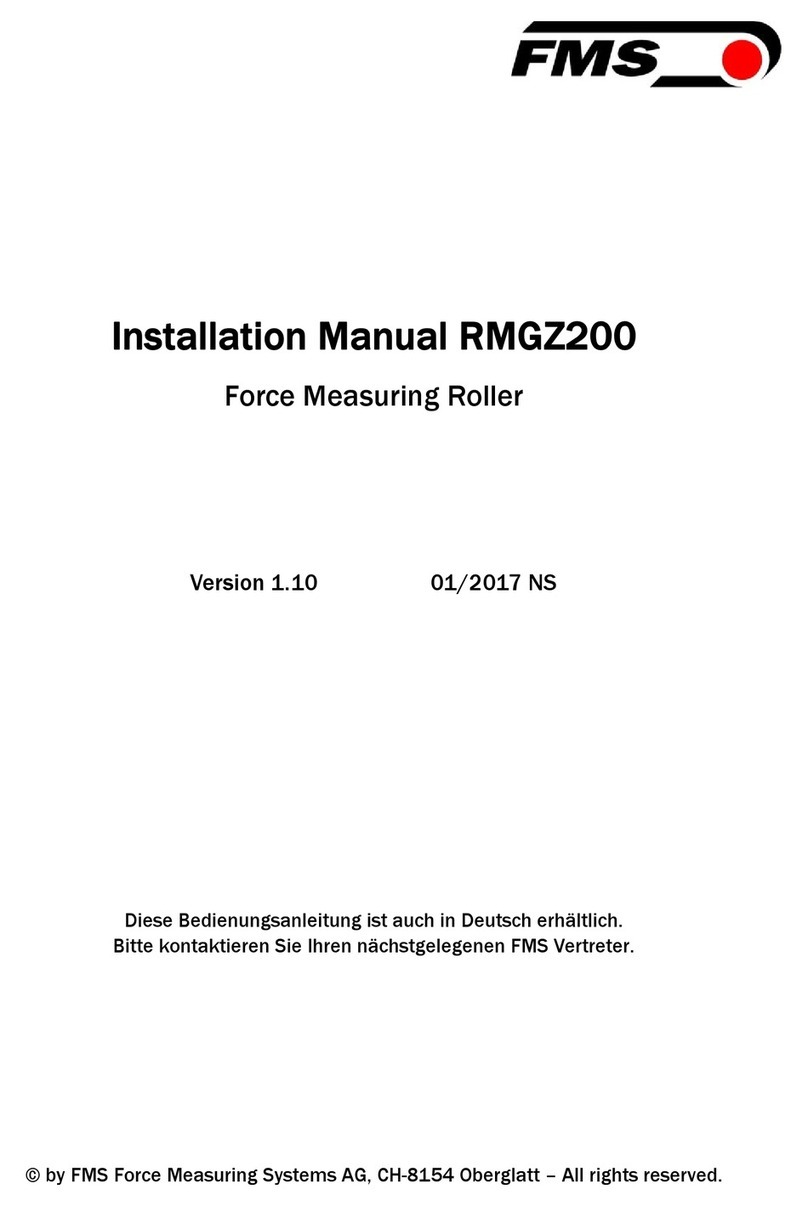
Operating Manual EMGZ309._.EIP
2
Table of contents
1Safety Instructions..................................................................................4
1.1 Description conditions 4
1.2 List of safety instructions 4
2Product Description ................................................................................5
2.1 Product Range 5
2.2 Block Diagram 5
2.3 System Description EMGZ309 5
2.4 System Description EMGZ309._.EIP 6
3Quick Installation Guide .........................................................................7
3.1 Preparations for Set-up 7
3.2 Installation Procedure 7
3.3 Installation and wiring 7
3.4 Mounting the Force Sensors 8
3.5 Wiring the Amplifier 8
4Configuring the Amplifier......................................................................10
4.1 Power up the EMGZ 309 10
4.2 Operating Panel 10
4.3 Change the Measuring Units 11
4.4 Change the Device Mode 11
4.5 Offset Compensation 11
4.6 Offset Compensation over the Operating Panel 12
4.7 Calibration 12
4.8 Calibration over the Operating Panel 13
4.9 Analytic Calibration Method 14
5Network Connection over EtherNet/IP ................................................16
5.1 EtherNet/IP Specification: 16
5.2 Amplifier Functionality over EtherNet/IP 16
5.3 Integration of EMGZ309._.EIP in an EtherNet Network 16
5.4 Configuration of the Amplifier over EtherNet/IP 17
5.5 Calibration over EtherNet/IP 17
6Integration in an Allen-Bradley PLC .....................................................18
6.1 Hardware Environment 18
6.2 IP Configuration 18
6.3 Integration in a Project 18
6.4 Access to the Tension Values 21
7Operation...............................................................................................22
7.1 Operating the EMGZ309 over the Operating Panel 22
7.2 Display Value Selection State 23
7.3 Displaying of Overload, Over and Underflow 23































